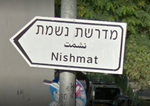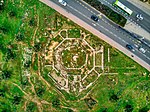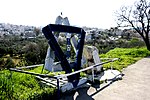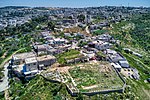Beit Safafa
Arab neighborhoods in JerusalemJerusalem GovernorateNeighbourhoods of Jerusalem

Beit Safafa (Arabic: بيت صفافا, Hebrew: בית צפפה; lit. "House of the summer-houses or narrow benches") is a Palestinian town along the Green Line, with the vast majority of its territory in East Jerusalem and some northern parts in West Jerusalem.Since the 1949 agreements, the neighborhood had been divided by the Green Line. Until 1967, the East Jerusalem part remained under Jordanian rule while the northern parts became under Israeli rule. Beit Safafa covers an area of 1,577 dunams. In 2010, Beit Safafa had a population of 5,463.
Excerpt from the Wikipedia article Beit Safafa (License: CC BY-SA 3.0, Authors, Images).Beit Safafa
A-Nahda, Jerusalem Beit Safafa
Geographical coordinates (GPS) Address Nearby Places Show on map
Geographical coordinates (GPS)
| Latitude | Longitude |
|---|---|
| N 31.743888888889 ° | E 35.205555555556 ° |
Address
א-נהדה
A-Nahda
9328257 Jerusalem, Beit Safafa
Jerusalem District, Israel
Open on Google Maps







